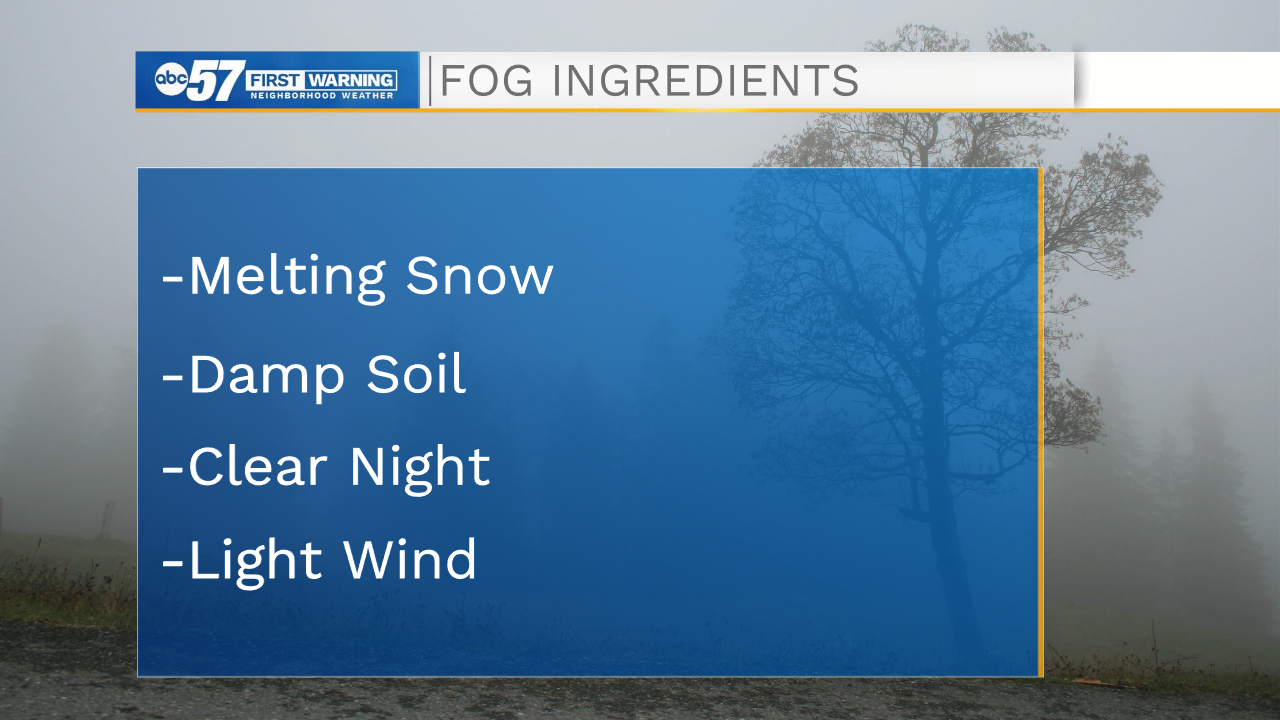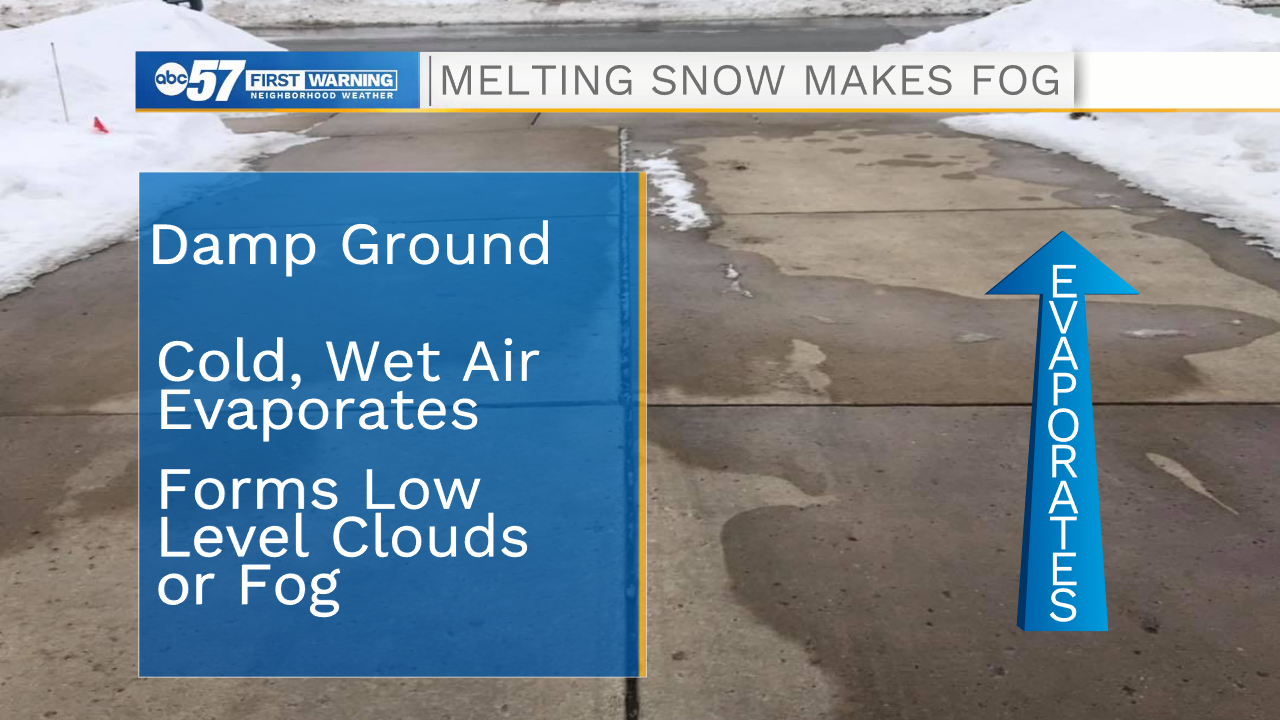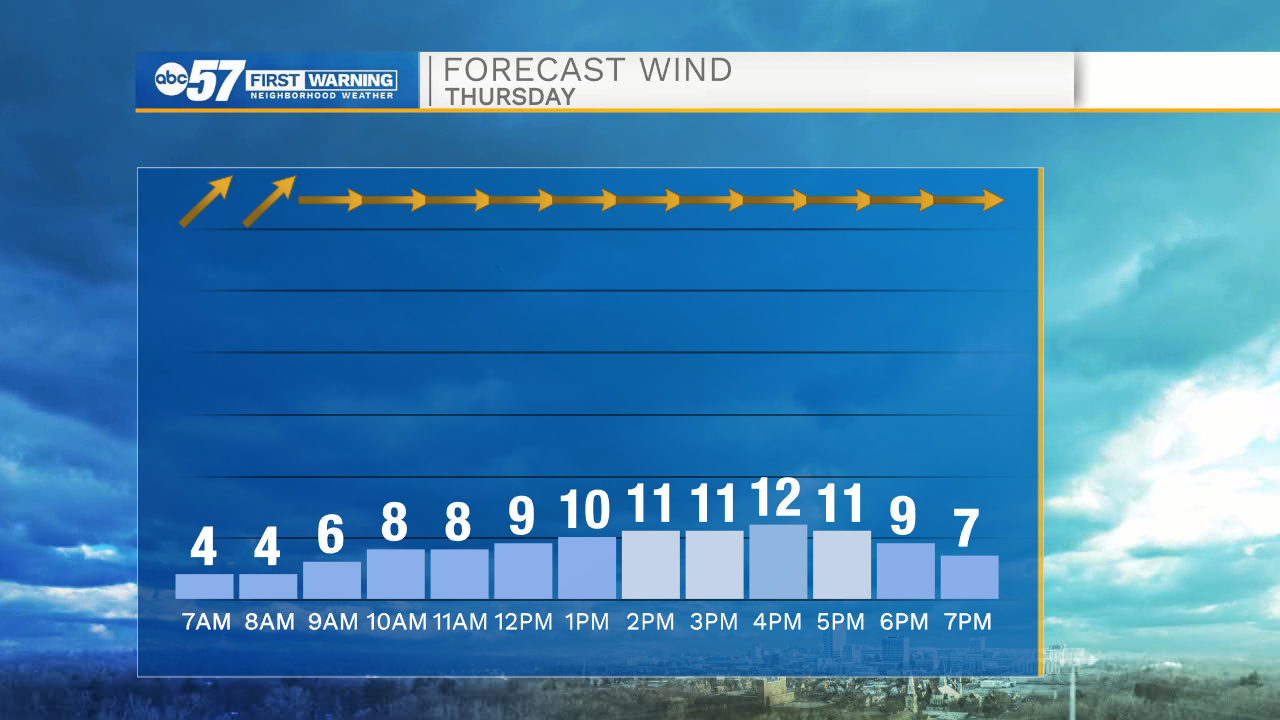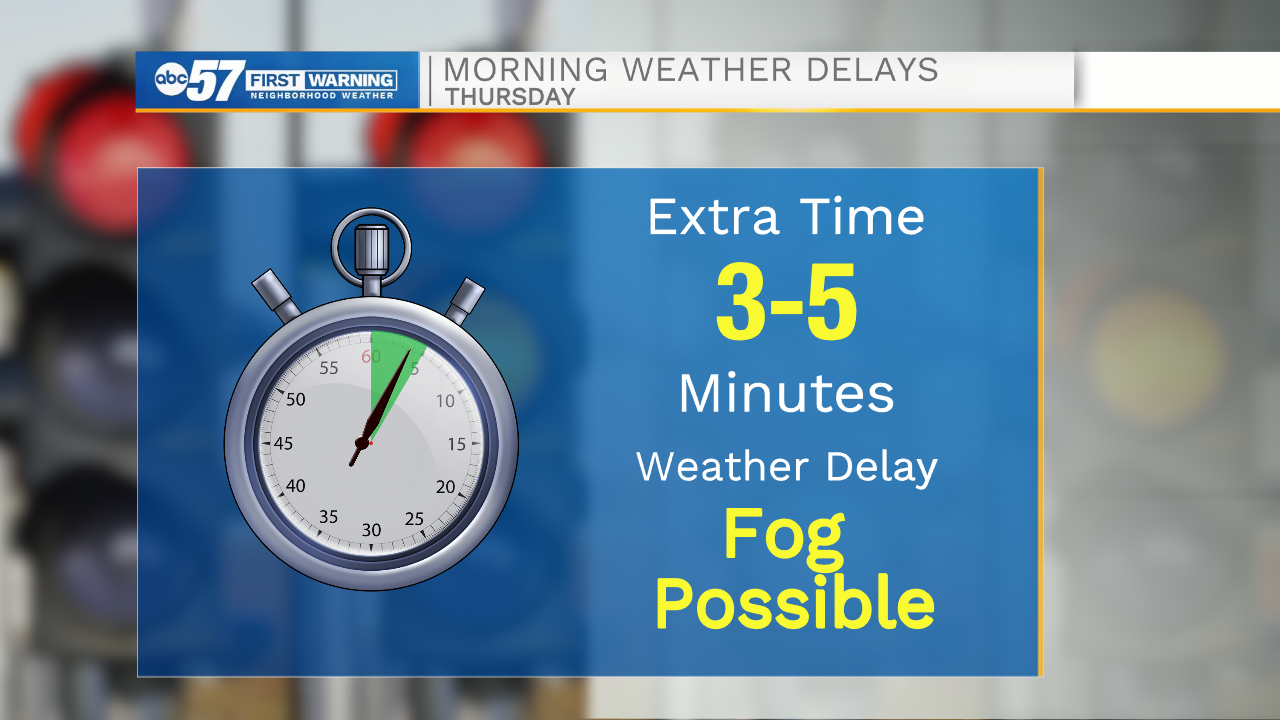Many of us are enjoying watching the snow melt outdoors. This can create puddles on the road, but can also lead to something hanging above the roads.
Melting snow can be a key ingredient in fog formation. Other pieces needed are a clear night and light winds.
The cold water from melting snow seeps into the soil. This evaporates, and forms either low level clouds, or fog. This is essentially what happens in the winter with our perma-cloud too.
Wednesday morning, we had most of the ingredients, but we didn't see fog form. Wind was in the ten to fifteen mile per hour range. The wind causes more mixing of air on the surface. This mixing causes air to dry more quickly. The dry air means no more evaporation, and no more clouds or fog.
Thursday's forecast includes slower wind. Fog will be a bit more favorable for that morning's drive.
Here are a few tips to stay safe while driving in the fog. First, use your regular headlights, not your brights. It seems counterintuitive. Using more light (with your brights) actually bounces off of fog, and is reflected back to you. This creates a glare.
If you are in a very dense fog, follow the reflective markings on the side of the road to guide you. Don't follow the lights of the car in front of you. If they accidentally go off course, you will follow them.
Slow and steady wins the race when it comes to fog, so give yourself three to five extra minutes to drive safely into work. Reduce your speed and don't use cruise control.
Our First Warning Neighborhood Weather Team will continue to track any fog for tomorrow, so check back with the forecast before you head out the door.



















